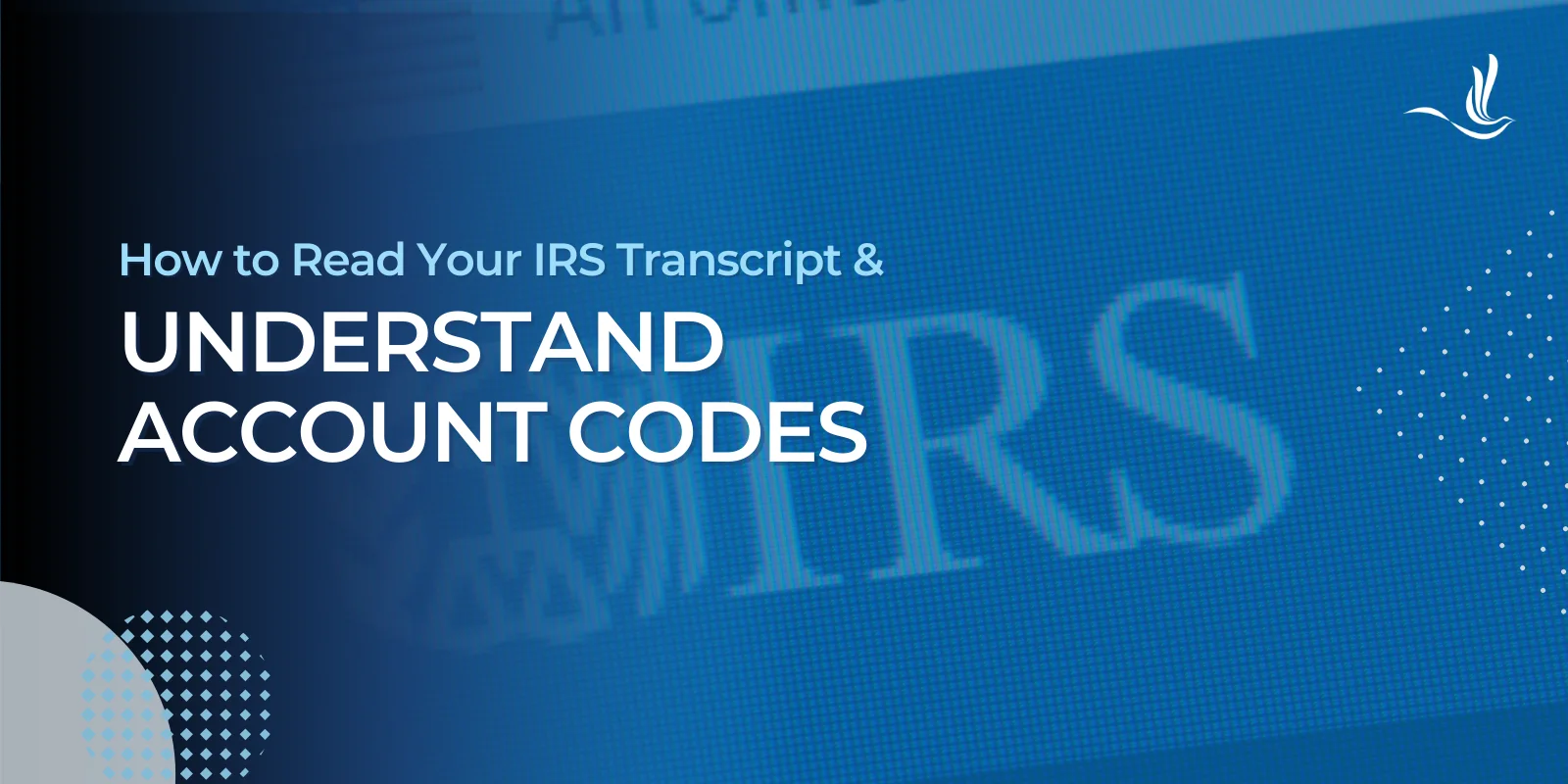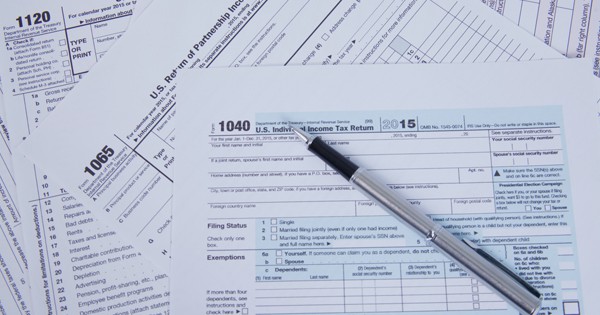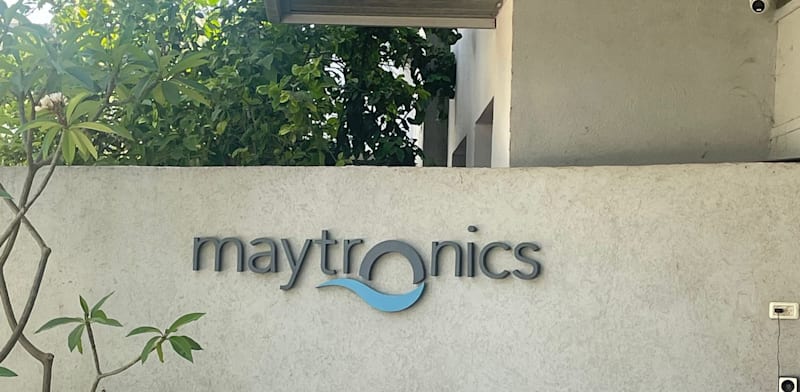Key Takeaways:
IRS transcripts are official tax records that show return data, payments, credits, and IRS transcript codes documenting every account action.
There are four main types of transcripts: Tax Return, Tax Account, Record of Account, and Wage & Income. Each serves different purposes like loan verification, refund tracking, or replacing lost tax forms.
IRS transcript codes explain account activity, from Code 150 (return filed) to Code 846 (refund issued) and others signaling penalties, audits, or delays.
Negative amounts favor taxpayers (credits, adjustments, or IRS-paid interest), while positive amounts indicate balances owed such as tax due or penalties.
The 2021 transcript format masks personal data and adds a Customer File Number (CFN) for secure third-party use like mortgage processing.
Transcripts go beyond refund tracking, helping with mortgage and student loan applications, amended returns, estimated payments, lien releases, and responding to IRS notices.
If you’ve ever ordered an IRS transcript, you know they can look overwhelming at first glance. Rows of numbers, dates, and abbreviations may leave you wondering what any of it actually means. The good news is that once you understand IRS transcript codes, these records become a powerful tool for tracking your return, refunds, and account activity. This guide will walk you through what an IRS transcript is, how to access it, and how to interpret the account codes that tell the story of your tax return.
What Is an IRS Transcript?
IRS transcripts are official records of your tax return and account activity. They provide a snapshot of what the IRS has on file for you, including information from your original return, payments received, credits applied, and any changes or adjustments made after filing. IRS transcripts are used for a wide range of purposes. Some of these include:
Mortgage and loan applications: Lenders often require IRS transcripts to verify reported income.
Student financial aid: The FAFSA process frequently uses IRS Data Retrieval or transcripts for income verification.
Small business and SBA loans: Business owners may need transcripts to prove past filings or income history.
Social service applications: State agencies sometimes ask for proof of income or past filings.
Responding to IRS notices: When the IRS questions your return, transcripts can help you confirm what was filed.
Amended returns: Transcripts provide the corrected starting figures you must use on Form 1040-X.
Verifying estimated payments or credits: Useful for checking Advance Child Tax Credit or stimulus (Economic Impact Payments).
Lien releases: Proof of paid balances or credits may be needed before a lien is released.
In short, IRS transcripts function as official tax records. Knowing these other uses helps taxpayers be proactive in situations where verified income or account history is required.
The Four Main Types of IRS Transcripts
Not all transcripts contain the same information. The IRS offers four main types, each serving a specific purpose.
Tax Return Transcript
This version shows most line items from your original tax return, including adjusted gross income (AGI). However, it won’t show changes made after filing. For example, if you filed an amended return, the changes won’t appear here. Many lenders ask for a tax return transcript when verifying income for mortgages or loans.
Tax Account Transcript
The tax account transcript provides a summary of your account. It shows filing status, taxable income, any balance due, and importantly, IRS transcript codes that record each action taken on your return. If you want to track payments, refunds, or IRS adjustments, this is usually the transcript to request.
Record of Account Transcript
As the name suggests, this is a combination of both the tax return transcript and the tax account transcript. It shows line items from your return as well as account activity. Tax professionals often request this one because it gives a complete picture. Because amended returns must use the IRS’s corrected figures as a starting point, the Record of Account is often the safest transcript to rely on when making changes.
Wage & Income Transcript
This transcript compiles income information reported to the IRS from third parties. It includes W-2s, 1099s, 1098s, and other information returns. It’s especially helpful if you’ve lost tax documents and need to know what income was reported to the IRS before filing.
New Transcript Format & Customer File Number (CFN)
In 2021, the IRS introduced a new transcript format to better protect taxpayer identities. Sensitive information is now partially masked, while financial details remain visible.
Here’s what you’ll see on the updated transcript:
Only the last four digits of SSNs, EINs, and account numbers
First four letters of names
First six characters of the street address
Full financial data (income, credits, penalties, balances)
In addition, the IRS created a Customer File Number (CFN) system. This 10-digit number is assigned by third parties (like lenders) and allows taxpayers to request transcripts that display the CFN instead of a full SSN. The CFN helps lenders match transcripts to the correct borrower without exposing sensitive identity data.
How to Access Your IRS Transcripts
Understanding your tax situation starts with obtaining your transcript. Thankfully, the IRS makes them fairly accessible in several ways.
Online via the IRS “Get Transcript” Tool
The fastest method is using the IRS Get Transcript Online tool. After verifying your identity, you can download and view transcripts instantly. This method is popular if you need information quickly, such as when applying for a mortgage or tracking refund delays.
Requesting by Mail
If you prefer, you can request a transcript by mail. Using the “Get Transcript by Mail” option, the IRS will send it to the address on file. This usually takes 5–10 days.
By Phone
Taxpayers can also order transcripts by calling the IRS automated line at 800-908-9946. This is a good option if you don’t have online access but need something faster than mailing in a form.
Through a Tax Professional
If you have a CPA, tax preparer, or enrolled agent representing you, they can obtain transcripts directly through the IRS Practitioner Priority Service or with your signed authorization. This is often the route taken during audits or complicated tax issues.
Business Transcripts
It’s important to note that businesses do not have online self-service access and must typically request transcripts by mailing or faxing Form 4506-T. The new masking rules (only showing partial SSNs, EINs, and addresses) apply to both individual and business transcripts. This distinction matters for entrepreneurs who file both personal and business returns. These individuals require different access methods depending on the transcript type.
Key Sections of an IRS Transcript
Once you have your transcript in hand, you’ll notice several key sections. Each section plays a role in helping you interpret what’s happening with your tax account.
Identifying Information
At the top of your transcript, you’ll see masked identifying details, such as the last four digits of your Social Security number, your filing status, and the tax year covered. The IRS protects sensitive information, so don’t be alarmed if parts of your SSN or address appear hidden.
Return and Account Data
Next, you’ll find summary information such as taxable income, balance due, and return processing details. For example, if you filed jointly with your spouse and reported $65,000 in taxable income, that figure will show here along with your filing status.
Transaction Codes
The heart of the transcript lies in the transaction codes section. These IRS transcript codes are three-digit numbers paired with dates and amounts. Each code represents a specific action or event in your account, from the filing of your return to the issuance of your refund.
Understanding IRS Transaction (Account) Codes
IRS transcript codes can look like a jumble of numbers, but they are actually a precise language the IRS uses to document every event on your account. Learning how to read them will help you understand the timeline and status of your tax return.
How Codes Are Structured
Each transaction code is a three-digit number, such as 150, 806, or 846. They usually appear with:
A posting date (when the IRS recorded the transaction)
A cycle code (showing the IRS processing week and day)
An amount (indicating money credited, debited, or refunded)
For example, if you see “Code 846 – Refund Issued – $2,500 – 03/01/2025,” it means the IRS approved and released your $2,500 refund on March 1, 2025.
What Do IRS Transcript Codes Mean?
Behind every IRS transcript is the Integrated Data Retrieval System (IDRS), which is the IRS’s master processing system. Transcript codes, known as Transaction Codes (TCs), are essentially internal instructions telling the IDRS what action to take. The IRS once published resources like the Transaction Code Pocket Guide (Doc 11734) and the more detailed Document 6209, which tax professionals still reference for understanding codes. While taxpayers now rely mostly on transcript descriptions, knowing these references exist adds credibility when interpreting unusual codes.
Common IRS Transcript Codes and Their Meanings
While there are hundreds of possible transaction codes, only a handful appear on most taxpayers’ transcripts. Here are some of the most important ones:
150 – Tax Return Filed: This indicates the IRS has received and processed your return. The amount shown reflects the tax liability reported. For example, if you filed a return showing $3,200 in tax liability, Code 150 will show that figure.
806 – W-2/Withholding Credit: This code applies credits for federal tax withholding reported by your employer. If your W-2 shows $6,500 in federal taxes withheld, that amount will appear under Code 806.
766 – IRS Adjustment or Credit: Code 766 typically represents credits applied to your account, such as refundable credits or adjustments made by the IRS.
768 – Earned Income Credit (EIC): If you qualify for the Earned Income Credit, it appears here. For instance, a $2,400 EIC will be reflected as a positive adjustment under Code 768.
570 – Additional Review/Frozen Refund: This is one of the most concerning codes for taxpayers. A Code 570 means the IRS has placed a hold on your refund pending further review. It doesn’t necessarily mean you did something wrong. Instead, it could be a random check or an identity verification step.
846 – Refund Issued: Perhaps the happiest code you’ll see, 846 means your refund has been approved and sent. The amount listed shows how much you’ll receive.
971 – Notice Issued: Whenever the IRS sends you an official notice, you’ll see Code 971. For example, if the IRS mails you a CP05 letter to verify income, the code will appear with the date the notice was generated.
977 – Amended Return Filed: If you submit Form 1040-X to amend your return, it will show up here as Code 977. This signals that the IRS is processing the amended filing.
Other Common IRS Transcript Codes
While most taxpayers only encounter refund-related IRS transcript codes (like 846 or 570), the IRS system includes hundreds of possible codes. Some other important ones include:
196 – Interest assessed
276 – Failure-to-pay penalty
291 – Abatement of prior tax
300 – Additional tax or deficiency assessment
420 / 428 – Examination indicators (audit review or case transfer)
460 – Extension of time to file
480 – Offer in Compromise pending
494 – Notice of deficiency issued
520 – Litigation initiated
530 – Account currently not collectible
582 – Federal tax lien indicator
Including these alongside the more common codes (150, 570, 846, 971, 977) gives you a fuller picture of how the IRS tracks account activity.
Special Codes That Can Delay Refunds
Some IRS transcript codes are red flags for refund delays. For example:
570 means your account is under review.
971 may indicate correspondence is needed before your return moves forward.
420 signals an audit has been opened.
Seeing these doesn’t necessarily mean you’ve done something wrong, but they do mean the IRS needs more time.
How to Read Dates, Amounts, and Explanations Next to Codes
Understanding IRS transcript codes goes beyond the numbers themselves. You also need to interpret the accompanying dates and amounts. A common source of confusion is whether numbers on a transcript represent money you owe or money in your favor. The rule of thumb is:
Negative amounts are in the taxpayer’s favor (credits, abatements, IRS interest payments).
Positive amounts are owed to the IRS (balances, penalties, additional assessments).
For example, you might see:
150 – Tax Return Filed – 02/20/2025 – $3,200
806 – W-2 Withholding – 02/20/2025 – -$6,500
846 – Refund Issued – 03/01/2025 – $3,300
In this sequence, your return showed $3,200 in tax liability, your employer withheld $6,500, and the IRS issued a $3,300 refund. The dates show when each step was recorded in the IRS system.
Cycle codes, which look like 20250705, also appear. These represent the IRS’s processing year, week, and day. In this example, “2025” is the year, “07” is the week of the year, and “05” represents the day of the week (Thursday). While not always essential for the average taxpayer, tax professionals often use cycle codes to estimate refund timing.
IRS Transcript vs. “Where’s My Refund” Tool
Many taxpayers rely on the IRS “Where’s My Refund” (WMR) tool to track their refunds, but transcripts often provide more detailed insights. WMR updates once per day and only gives three basic statuses: “Return Received,” “Refund Approved,” and “Refund Sent.” By contrast, your IRS transcript shows each step in detail through transaction codes.
For example, WMR might still say “Return Received,” while your transcript reveals that Code 846 (Refund Issued) has already posted with a specific date and amount. That’s why many taxpayers check transcripts to get an early look at refund progress.
Practical Tips & Warnings for Using IRS Transcripts
IRS transcripts are powerful tools, but they can also cause problems if misused. A few practical tips:
Always use corrected figures for amended returns. If you rely on your original return numbers instead of the updated ones shown on your transcript, the IRS may reject or misprocess your Form 1040-X.
Watch for timing issues. Some codes (like 570 holds) resolve automatically within weeks, while others (like 420 audits) require direct IRS correspondence.
Cross-check payments and credits. Use your transcript to confirm estimated payments, withholdings, and refundable credits were applied correctly.
Don’t panic at unusual codes. Not all codes mean something is wrong—many are purely administrative.
By treating transcripts as both a diagnostic tool and a record of proof, taxpayers can avoid surprises and resolve IRS issues faster.
Frequently Asked Questions
What do the transaction codes mean on account transcripts?
IRS account transcript transaction codes are shorthand entries the IRS uses to track every action on your tax account, such as when your return is processed, a refund is issued, or additional review is required. Each code has a specific meaning tied to IRS procedures.
What does account balance plus accruals mean on transcript?
“Account balance plus accruals” shows your total balance due, including tax, penalties, and interest that continues to accrue until paid. If the balance is zero, your account is considered settled.
Will I get my refund with a 570 code?
Code 570 means your return is on hold for additional review, often delaying your refund. Once resolved, a Code 571 (resolved) or 846 (refund issued) typically appears before money is released.
Which transcript shows the refund date on the IRS?
The IRS Account Transcript is the one that shows the refund date. Look for Transaction Code 846, which indicates the refund has been approved and scheduled.
What is the difference between account transcript and return transcript?
An Account Transcript shows a history of IRS actions, payments, and balances, while a Return Transcript shows line-by-line information from your filed tax return. Many lenders request a Return Transcript, but Account Transcripts are better for tracking refund status and IRS updates.
How do I unmask my IRS transcript?
The IRS masks sensitive data on transcripts by default. To request an unmasked version, you must submit Form 4506-T and check the box asking for complete information.
What does a negative account balance mean on an IRS transcript?
A negative balance means the IRS owes you money, often from a refund, credit, or IRS-paid interest. Positive balances, by contrast, mean you owe the IRS.
Tax Help for Those Who Owe
For most taxpayers, reading IRS transcript codes is straightforward once you know the basics. But there are times when professional help is wise. If your transcript shows codes related to audits (like 420), examination adjustments, or if your refund is frozen without explanation, it may be time to call a tax professional. A CPA, enrolled agent, or tax attorney can interpret complex codes, contact the IRS on your behalf, and ensure you respond appropriately to notices. Optima Tax Relief is the nation’s leading tax resolution firm with over a decade of experience helping taxpayers with tough tax situations.
If You Need Tax Help, Contact Us Today for a Free Consultation


























